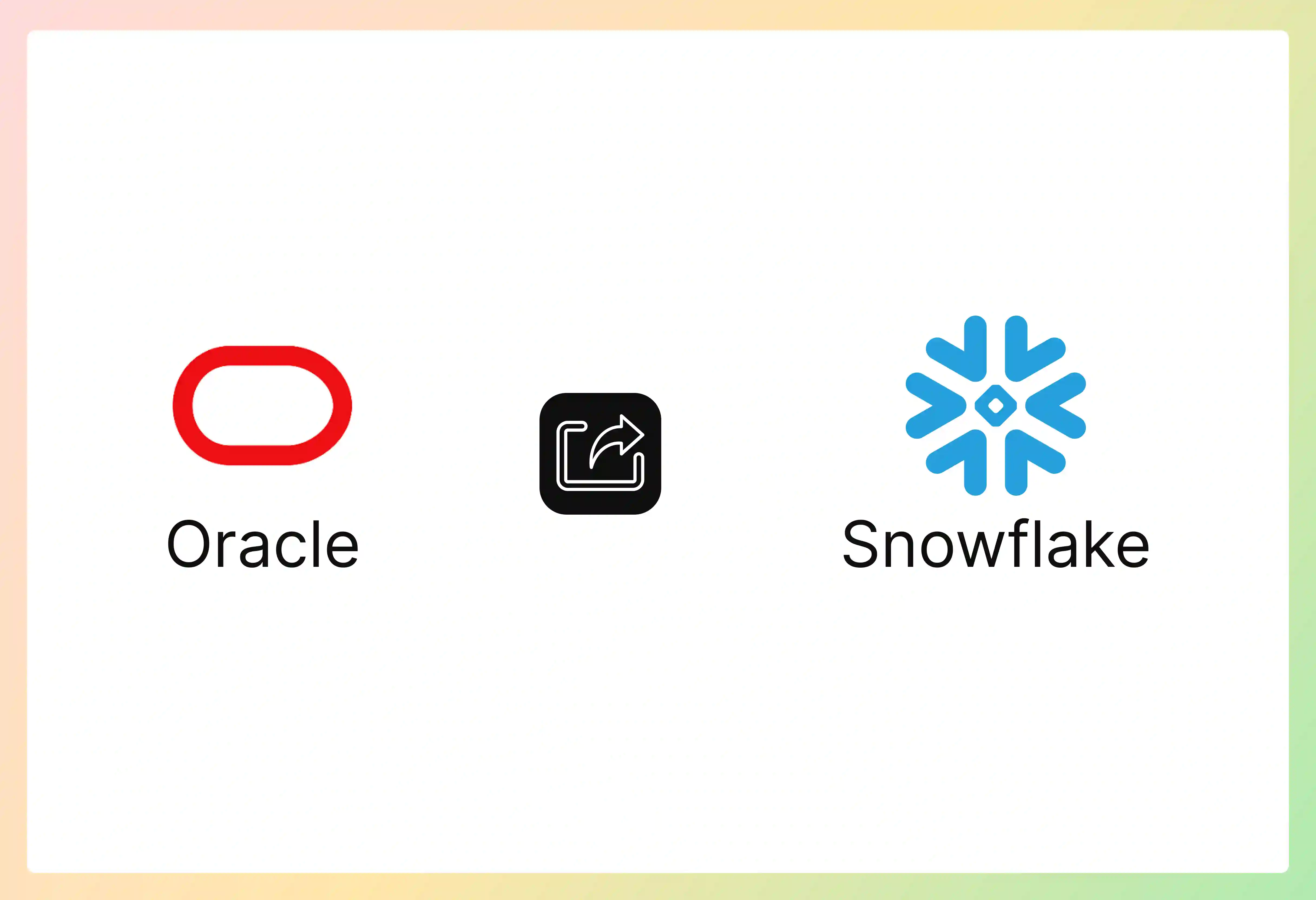


Shifting your whole data warehouse setup from an older system like Oracle to a new cloud system such as Snowflake is not a small task.
Many possible issues can pop up during such a switch.
That’s why we’ve put together this guide to help make your path of Oracle to Snowflake Migration much smoother.
Many companies today are wondering if they should stay with their current Oracle systems. Or, should they switch to a cloud-born system like Snowflake?
Oracle has long been a strong and dependable database for company use. This is especially true for transaction-based work (OLTP). However, Snowflake makes a strong argument for new analytical work (OLAP). It also fits data warehousing needs well.
Snowflake's design is cloud-born from the very start. It is constructed on public cloud setups (AWS, Azure, or GCP). Key distinct points include:

Migrating from Oracle to Snowflake needs careful thought and action. Here’s an orderly way to do it:
Before starting the change, a full look at your present Oracle configuration is important. This helps create an orderly path for the activity.
Migrating from Oracle to Snowflake needs careful design. This is to use Snowflake’s good points.
Getting data out of Oracle well and dependably is a basic stage.
Make sure of transaction wholeness. This is especially true for ongoing copying. Tools that accept CDC are usually better. They help lessen downtime and data differences.
Get data into common forms like CSV, Parquet, or ORC. Plan for a middle placement spot. This is usually cloud object storage (Amazon S3, Azure Blob Storage, Google Cloud Storage). Snowflake can reach this directly.
Snowflake is very suitable for an ELT (Extract, Load, Transform) way. Here, raw data is added to Snowflake first. Then it is reshaped using Snowflake's compute ability.
Once data is placed and reshaping logic is set, add it into your target production tables in Snowflake.
This stage means making the database structures. It also means rewriting or re-pointing applications.
Full checking cannot be skipped. It is to see that a change is successful.
The last part means switching over to the new Snowflake setup.
Companies decide to change from Oracle to Snowflake for a strong group of reasons. These mostly center on making things new, adjustability, output, and cost.
Snowflake's cloud-born design permits separate and almost instant adjusting of compute amounts (virtual warehouses) and storage.
This means you can set exactly the right amount of computing ability for different kinds of work. You can adjust up or down in seconds. You pay only for what you use.
This is a big plus over Oracle. With Oracle, adjusting often means getting hardware, complex setups, and higher fixed expenses.
Snowflake is designed for analytical query output. It uses its massively parallel processing (MPP) design. It has a good storage form and automatic query-making features.
This often leads to quicker query run times for complex analytical work. This is compared to common RDBMSs like Oracle. Oracle might be made better for transaction work.
Snowflake's pay-for-use cost plan for storage and compute can lead to large cost savings. This is compared to Oracle's often complex and expensive license, hardware, and upkeep expenses.
The ability to stop computing amounts when not used (e.g., overnight for development warehouses) further makes costs better.
Snowflake makes many parts of data warehouse upkeep simpler. Automatic tuning, vacuuming, and few indexing needs lessen the administrative load.
Native acceptance for semi-structured data (JSON, AVRO, XML, etc.) is a plus. Easy data sharing abilities and items like Time Travel and Zero-Copy Cloning make new data workflows smoother. They also help new ideas grow.
As a fully managed Software-as-a-Service (SaaS) product, Snowflake removes the need for users to manage setups, software installations, patching, or updates.
This lets teams work on getting knowledge from data. They do not have to work on database administration. It also means high availability and disaster recovery managed by Snowflake.
Migrating from Oracle to Snowflake lets companies take on a future-ready data system built for the cloud. This means they can keep up with growing data amounts. They can also handle new data types and advanced analytics abilities like AI/ML.
Migrating from a deeply set system like Oracle to a new cloud data system like Snowflake is a big task.
Oracle has served many companies well. However, Snowflake's design is specially built for the needs of today's data-heavy world.
At Entrans, our team operates continuously to give your work top attention. With data analytics, cloud engineering, product building, and testing, we’ve partnered with Fortune 500 firms to deliver nothing but good results. Want to see if we can help you? Book a no-cost discussion call!
Lorem ipsum dolor sit amet, consectetur adipiscing elit, sed do eiusmod tempor incididunt ut labore et dolore magna aliqua. Ut enim ad minim veniam, quis nostrud exercitation ullamco laboris nisi ut aliquip ex ea commodo consequat. Duis aute irure dolor in reprehenderit in voluptate velit esse cillum dolore eu fugiat nulla pariatur.
Block quote
Ordered list
Unordered list
Bold text
Emphasis
Superscript
Subscript







